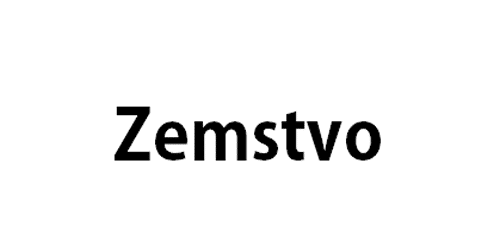Zemstvo is a system of local self-government that was used in several regions of the European region of Russia from 1864 to 1918. It was established on January 1, 1864, as a result of the Zemstovo Reformation. Zemstvos existed on two levels, Wayzed (Canton) and Province; Wise assemblies, consisting of representatives of individual land-owned and peasant village communities, elect provincial councils. Each parliament appoints an executive board and appoints professional experts to carry out its functions. The key principles of the Zemstvo Reform are self-government on issues related to electoralism, representation of all classes, and local economic needs. Provincial Zemstovo organizations were established in 1865 in Chernihiv Gubernia, Kharkiv Gubernia, Kherson Gubernia, and Poltava Gubernia, and in 1866 in Katarinoslav Gubernia and Taveria Gubernia. Due to government concerns about the expansion of local self-government institutions in areas where a large part of the aristocracy was Polish, their right-bank was not introduced in Ukraine until 1911 (Kyiv Gubernia, Volhenia Gubernia and Podilia Gubernia revolt of 1863–4).
By law, Zemstvo councils and executive boards were formed in the Zemstvo agencies of districts and provinces. The electoral system was established on the basis of class and property. Nevertheless, they have expanded the network of primary schools, built roads, provided healthcare, and instructed farmers in agriculture. They also campaigned for constitutional reform from the late 1890s and carried out revolutionary activities in 1904-05 and 1917 through a union organized by Jemstovos and their professional staff. The Zemstvo Assembly and the boards lacked authority as bodies for communication between themselves. Their activities were controlled by the Governor and the Minister of Internal Affairs, who had the power to block the implementation of any decision of the Gemstov Assembly. Public security (militia) came under them. In Ukraine, Zemstovra began the process of the Ukrainian position and filled his position with Ukrainian political activists. Kyiv magazine James’ka Heita began publishing in Ukrainian. Fearing the influence of the Gemstovo companies, the government gave them only the right to manage local economic affairs: maintenance of roads and other forms of communication, construction and maintenance of schools and hospitals (for which the Gemstovo imposed local duties on the people), and “sponsors” local trade and industry development.
After the outbreak of World War I, Zemstov was recruited, although trained and generally incapable of carrying out this task, to provide full logical responsibility for the entire army, including all food supplies and clothing. During the February Revolution, Zemstvo was unable to compete with the growing Soviets. The term Zemstvo is also referred to as a 16th-century institution for tax collection.















